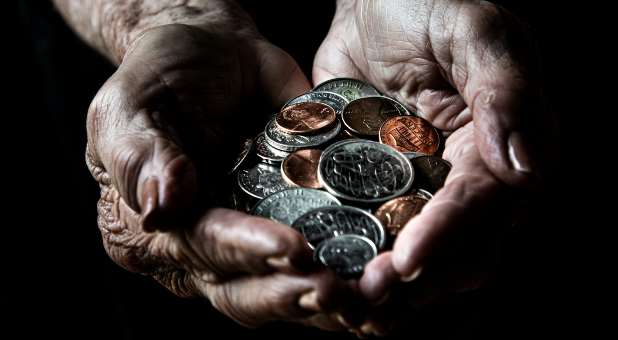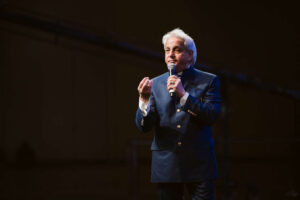Swedes who talked on mobile or cordless phones for more than 25 years had triple the risk of a certain kind of brain cancer compared to those who used wireless phones for less than a year, a new study suggests.
The odds of developing glioma, an often-deadly brain cancer, rose with years and hours of use, researchers reported in the journal Pathophysiology.
“The risk is three times higher after 25 years of use. We can see this clearly,” lead researcher Dr. Lennart Hardell said in a telephone interview.
His finding contrasts with the largest-ever study on the topic—the international Interphone study, which was conducted by the International Agency for Research on Cancer and funded in part by cell phone companies. That study, published in 2010, failed to find strong evidence that mobile phones increased the risk of brain tumors.
Even if the odds of developing a glioma were doubled or tripled, however, the risk would still remain low.
A little more than 5 out of 100,000 Europeans (or 0.005 percent) were diagnosed with any kind of malignant brain tumor between 1995 and 2002, according to a 2012 study in the European Journal of Cancer. If the rate triples, the odds rise to about 16 out of 100,000 (or 0.016 percent).
Hardell, an oncologist from University Hospital in Orebro, Sweden, and his colleague Michael Carlberg matched 1,380 patients with malignant brain tumors to people without such tumors and compared their wireless phone use.
People who reported using wireless phones for 20 to 25 years were nearly twice as likely to be diagnosed with glioma as those who reported using them for less than a year, the study found. Those who used cellphones and cordless phones for more than 25 years were three times more likely to develop one of these tumors.
The study did not show an association of wireless phones with malignant brain tumors other than glioma.
Participants who recalled talking the most—more than 1,486 hours—on wireless phones were twice as likely to develop glioma compared to those who said they used the devices the fewest hours—between one and 122 hours, the study found.
Case control studies such as this suffer from a number of limitations, however, the most serious being the need for participants to remember their behavior patterns from decades earlier.
Dr. Gabriel Zada, a neurosurgeon at the University of Southern California’s Keck School of Medicine, who wasn’t involved in Hardell’s study, advises precautionary measures, such as using the phone’s speaker or a hands-free headset.
But he said the new study failed to answer his patients’ questions about why they developed brain tumors.
“A lot of people ask me, ‘Why did I get this brain tumor?'” he said. “There are a lot of different theories. It’s a much more convoluted picture than just saying cellphones caused this.”
In a 2012 study, Zada reported that rates of malignant tumors in parts of the brain closest to where people hold their phones rose significantly in California from 1992 to 2006—although the incidence of gliomas throughout the brain decreased.
U.S. cellphone use tripled between 2000 and 2010, according to the Wireless Association(CTIA), which represents manufacturers. But in the U.S. overall, rates of cancer in parts of the brain that would be more highly exposed to radio frequency radiation from cellphones had not gone up at the time of a 2010 report in the journal Neuro-Oncology.
Zada believes the current study underscores the need for more research.
“It is more evidence suggesting a possible association between brain tumors and cellphones,” he said. “But it’s certainly not convincing that cellphones cause brain cancer.”
A World Health Organization panel of 31 scientists from 14 countries classified mobile phones as “possibly carcinogenic” in 2011. The U.S. Federal Communications Commission is currently reassessing the safe radiation exposure limits it adopted in 1996.
Cellphones emit radio frequency energy, which can be absorbed by tissues closest to where the phone is held, the National Cancer Institute says on its website. “Studies thus far have not shown a consistent link between cellphone use and cancers of the brain, nerves or other tissues of the head or neck,” it says.
Hardell is one of the few researchers who include cordless phones when studying cellphones and cancer risk. He believes emissions from the base stations of cordless phones can be problematic, especially when users sleep next to them.
Children may be most vulnerable to wireless phone emissions, Hardell says. They absorb more radiofrequency electromagnetic fields, he writes, because of their small heads, thinner skulls and higher brain conductivity.
“Girls tends to put the smartphone below the pillow,” he says. “It’s a bad habit to go to bed with your smartphone.”
Zada also believes developing brains may be more susceptible and recommends against sleeping with cellphones.
Nevertheless, he says: “It’s hard to make formal recommendations because the data is lacking. It’s not smoking and lung cancer because it’s not proven.”
For the original article, visit newsmaxhealth.com. © 2014 Thomson Reuters. All rights reserved
See an error in this article?
To contact us or to submit an article


















